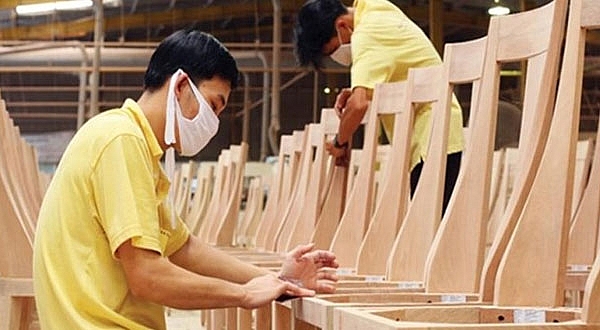CPTPP facilitates growth of Vietnamese timber industry
 |
| The CPTPP will open great opportunities for the Vietnamse timber segment |
The growth of the real estate market and the bilateral-multilateral trade agreements between Vietnam and other countries will contribute to developing the export of wood products in 2018, according to many experts.
In particular, CPTPP signed on March 8 by 11 members states, including Vietnam, is expected to benefit many industrial segments, such as textiles, footwear, seafood, and timber.
Ly Vinh Hung, director of Lyprodan Company, told VIR that the company’s export turnover to CPTPP member countries only make up 10 per cent of its total annual export value. The largest obstacle is that import tariffs on wood in these markets are high, at around 12 per cent. However, the signing of the CPTPP is expected to help the company to double or triple their export value from these markets.
| Once the CPTPP comes into effect, not only will the export tax in these markets be reduced, but the prices of input materials from these markets will also fall due to preferential taxes. Therefore, the agreement will greatly benefit timber enterprises. |
To take advantage of the CPTPP, Vietnam’s timber enterprises have participated in the world’s largest furniture fairs to approach partners from the CPTPP, then changing product design and pricing for each market.
CPTPP has paved the way for Vietnamese wood products to reach the CPTPP’s 10 national markets, especially the most sophisticated markets like Japan and Canada, and new markets like Chile and Peru. However, to take advantage of these opportunities, Vietnamese timber enterprises have to expand production and improve product quality.
According to Huynh Van Hanh, vice chairman of the Vietnam’s Handicraft and Wood Industry Association (HAWA), the capacity of Vietnamese timber enterprises is lower than in other countries. Therefore, domestic enterprises have to invest in upgrading equipment, machinery, and adopt new technologies to meet the requirements of more sophisticated markets.
According to the General Department of Customs, the export volume of wood products in 2017 reached $7.66 billion, up 10 per cent on-year, while imports hit $2.18 billion, up 16 per cent. Therefore, the Vietnamese timber segment made a trade surplus of $5.48 billion in 2017, up 7.8 per cent on-year.
With an average annual growth of 10 per cent, the Vietnamese timber segment set the goal of $9-billion in export volume in 2018, up 17 per cent over 2017.
What the stars mean:
★ Poor ★ ★ Promising ★★★ Good ★★★★ Very good ★★★★★ Exceptional
Themes: CPTPP
Related Contents
Latest News
More News
- PM urges Ho Chi Minh City to innovate and remain Vietnam’s economic locomotive (November 26, 2025 | 15:29)
- Experts chart Vietnam's digital finance path: high hopes, high stakes (November 14, 2025 | 10:56)
- Vietnam’s seafood imports surge 30 per cent in first 10 months (November 10, 2025 | 19:35)
- Vietnam’s durian exports hit $1 billion milestone (October 30, 2025 | 17:41)
- Beyond borders: Sunhouse and new era of Vietnamese brands on Amazon (October 28, 2025 | 10:46)
- Record-breaking trade fair set to open in Hanoi (October 15, 2025 | 15:59)
- Timber sector seeks solutions to VAT refunds (October 14, 2025 | 18:58)
- Tether explores investment prospects in Vietnam’s digital asset sector (October 10, 2025 | 18:09)
- Vietnamese investors pour nearly $847 million into overseas markets in nine months (October 08, 2025 | 18:42)
- Vietnam amends Law on Civil Aviation to create drive airport investment (October 03, 2025 | 18:29)

 Tag:
Tag:

























 Mobile Version
Mobile Version